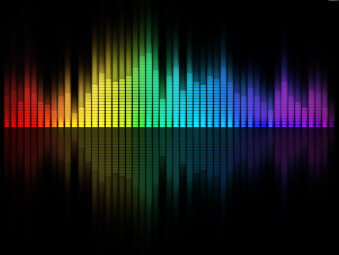In this episode we'll discuss a pretty subjective application of EQing, namely, coloration.
Colors of the EQ
At the current stage, you should already have clean tracks that blend well with each other. The pieces of your sonic puzzle ought to fit together naturally, from a frequency point of view. And, if the recordings were done coherently in relation to the final result expected, this stage of “sonic coloration” shouldn’t be necessary. Problem is, there is a widespread bad habit of leaving crucial choices for the latest stages in the chain of production with bogus arguments like “we’ll fix it in the mix” or “we’ll fix it in mastering.” Sound familiar? Odds are that won’t be possible.
Consequently, it’s worth dwelling on coloration a bit. The goal is to give your instrument warmth, fullness, brilliance, air, etc. Terms that are completely subjective, which makes it impossible to give a scientific definition, considering that their meaning depends on how each of us perceives things. Nevertheless, you can find thousands of pages online explaining how you need to look between such and such frequencies if you want to boost the body or fullness of this or that instrument, for instance. Far from being perfect, these indications are very useful as a starting point. And, since you are all very smart, I’m pretty sure you have already noted these indications in the frequency chart we used previously. It would be useless to try to reinvent the wheel with yet another list of frequencies per instrument, which is why we’ll focus on some advice for the approach you should take.
First off, don’t forget you have a plan! This coloration stage ought to follow that plan. In other words, it would be counterproductive to highlight the presence of a synth whose place is in the background of the mix.
Use your common sense. Not all instruments can have body, presence and brilliance at the same time, or you risk ending up with a sonic mush. Think about the notion of contrast and use it to your advantage. To use a visual analogy, black will look darker if it’s surrounded by white. Well, it’s the same thing with sounds. An instrument will seem brighter if it’s surrounded by instruments that aren’t.
In the same order of ideas, a single instrument shouldn’t sound bright, airy, fat, and with presence unless you are working on a song with only one single instrument.
Regarding the practical approach, remember, as usual, that it makes no sense to go to extremes. Boosting 2 dB or 3 dB often makes a huge difference. As for the Q factor, you should know that, the larger the bandwidth, the less gain is needed and the more natural it will sound.
Finally, unlike for the other EQing stages, where a neutral plug-in is recommended, an EQ with a particular sound will work wonders this time around. Actually, “vintage”-type plug-ins usually provide some extra “character” when boosting things, thanks to the addition of harmonic distortion.
In the next episode we’ll see how EQing can be used to impact the spatial sensation of a mix.

